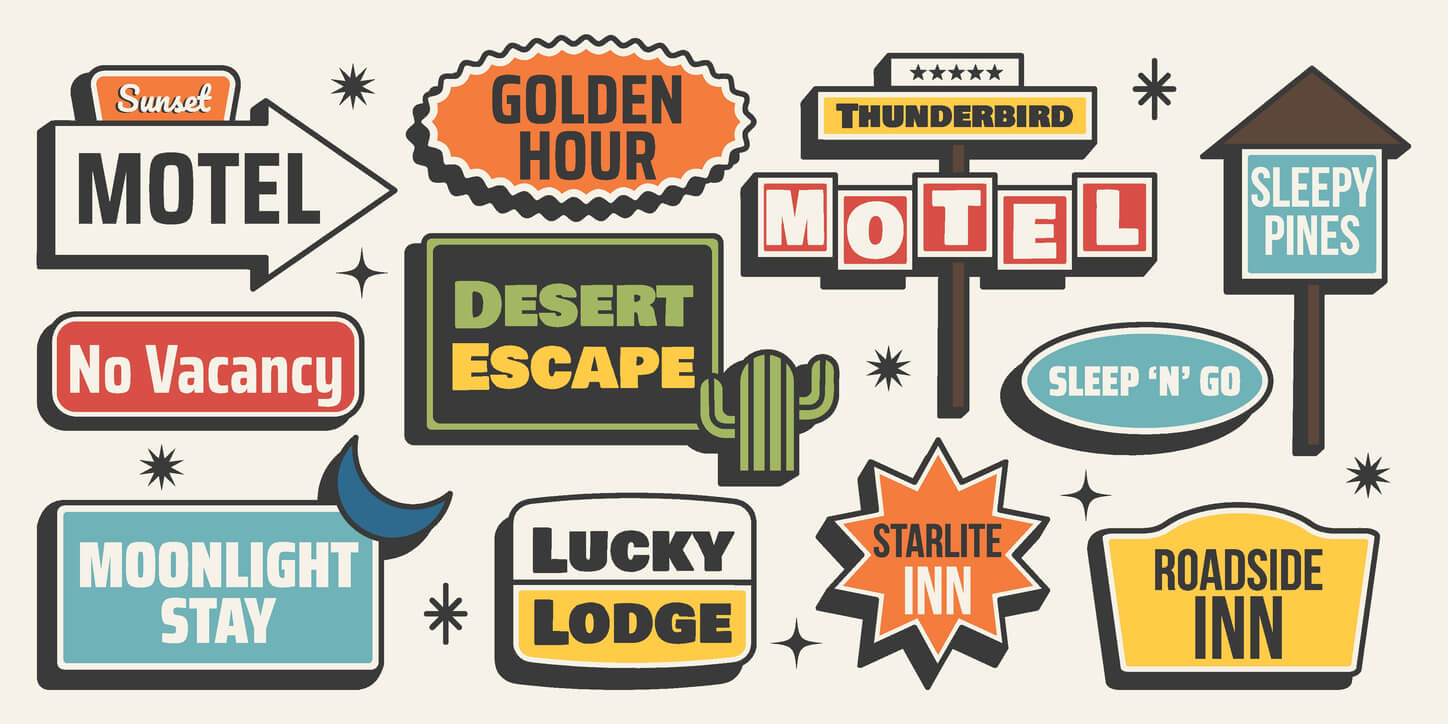Businesses need ways to attract attention in busy public spaces, and outdoor signage boards remain one of the most dependable tools for doing so. With the right approach to colour, fonts and layout, they can guide customers and leave a lasting impression. Thoughtful design choices are the difference between a sign people pass by and one that prompts them to stop and engage.
What Colours Work Best for Signage Boards?
Colour is often the first feature people notice. Using a palette that contrasts well with its background makes the message easier to see. A shopfront with dark walls might benefit from light lettering, while a stall at a market could use brighter shades to stand out in a busy setting.
Psychology also plays a role. Warm tones like red and orange can spark urgency and excitement, while cooler tones like blue suggest calmness. Businesses should choose colours that align with their brand while remaining easy to distinguish from a distance.
Two or three complementary shades are usually enough to make the design readable without being too overwhelming.
How Should Fonts be Chosen for Maximum Impact?
Typefaces affect readability and even the reader’s mood. On outdoor signage boards, fonts must be simple to read in seconds. Decorative scripts may look attractive up close but often fail when viewed from across the street. Clean sans-serif fonts generally perform better for large headers, and for smaller supporting text.
To avoid overcrowding, restrict the sign to no more than two typefaces. Using one for the headline and another for detail text helps create contrast without making the layout feel confused.
Text size also matters. A letter height of at least five centimetres is needed for every two metres of viewing distance. Larger fonts give greater impact and prevent people from straining to understand the message.
What Layouts Help Signs Get Noticed?
The way information is arranged on signage boards is as important as the content itself. A clear hierarchy should guide the eye, beginning with the main headline and followed by supporting details.
White space plays a vital role in layout. Allowing breathing room between elements prevents the design from feeling overcrowded. Too much content packed together often reduces legibility and impact.
It is also helpful to:
- Place the most important text at eye level
- Keep lines short and punchy
- Use arrows or icons to guide direction
How Can Signage Boards Draw Attention at Events?
Events often bring large crowds, creating opportunities for businesses to connect with new customers. Outdoor signage boards placed around entrances or walkways can highlight promotions and direct people towards a stall or shop. Boards with clear arrows or concise offers are especially useful for visitors who are unfamiliar with the area.
Designing boards for events also allows for creativity. Limited-time graphics or themed visuals can make them feel part of the occasion while still building brand awareness.
How Can Signage Stay Consistent with Brand Identity?
Consistency builds trust. Signage boards should use the same colour palette and fonts as your other marketing channels. This creates familiarity and builds customer association with the brand.
Logos should always be given sufficient space, not squeezed into a corner. If a brand uses particular icons or taglines elsewhere, these can be incorporated to create a unified look across platforms.
By mirroring other touchpoints, boards become an extension of the brand rather than separate.
How Does Lighting Affect Boards?
Lighting is often overlooked, but it dramatically affects how outdoor signage boards perform. At night or in darker settings, internal illumination or external spotlights keep the sign readable. In daylight, matte finishes can prevent glare, while high-contrast lettering improves legibility in bright conditions.
LED lighting has become a popular option as it uses less power and can last longer than traditional bulbs. Businesses that operate late into the evening should consider investing in illuminated boards to maintain constant presence.
How Can Signage Help Customers Find Their Way?
Signage is not always about marketing a single offer. Boards can also act as guides, helping customers move through larger areas such as retail parks or markets. Clear maps and arrows make spaces easier to explore and improve overall customer experience.
Businesses benefit when people can easily find their way to entrances or key attractions. Boards designed for guidance should use simple symbols and minimal text to keep directions straightforward.
What Design Mistakes Reduce Impact?
Poor choices can reduce the impact of outdoor signage boards. Common errors include:
- Using too many colours or fonts
- Overloading the board with too much text
- Placing important details below eye level
- Forgetting to check how the sign appears in different lighting conditions
Avoiding these mistakes helps keep the message sharp and clear.
How Can Boards be Used Alongside Digital Campaigns?
Physical and online marketing can work together. QR codes printed on signage boards allow people to scan and access websites, menus or promotions instantly. Social media handles included on the board help bridge the gap between offline and online activity.
This approach also gives businesses measurable data, as QR scans or promo codes can track engagement levels directly linked to the signage.
What Extra Details Improve Customer Engagement?
Small touches can make a big difference:
- Using textures like wood, chalkboard or metallic finishes to stand out
- Adding clear directional arrows to guide customers
- Keeping the wording conversational rather than overly formal
These elements help outdoor signage boards feel more memorable.
Why Outdoor Signage Boards Remain a Smart Choice
Despite shifts in marketing trends, outdoor signage boards continue to prove their worth. They offer exposure and direct communication with passers-by. When created with attention to colour and layout, they make a clear statement that draws people closer.
Well-designed signs give businesses an edge by keeping their message present where it matters most. To start creating signage boards that capture attention, contact us.






